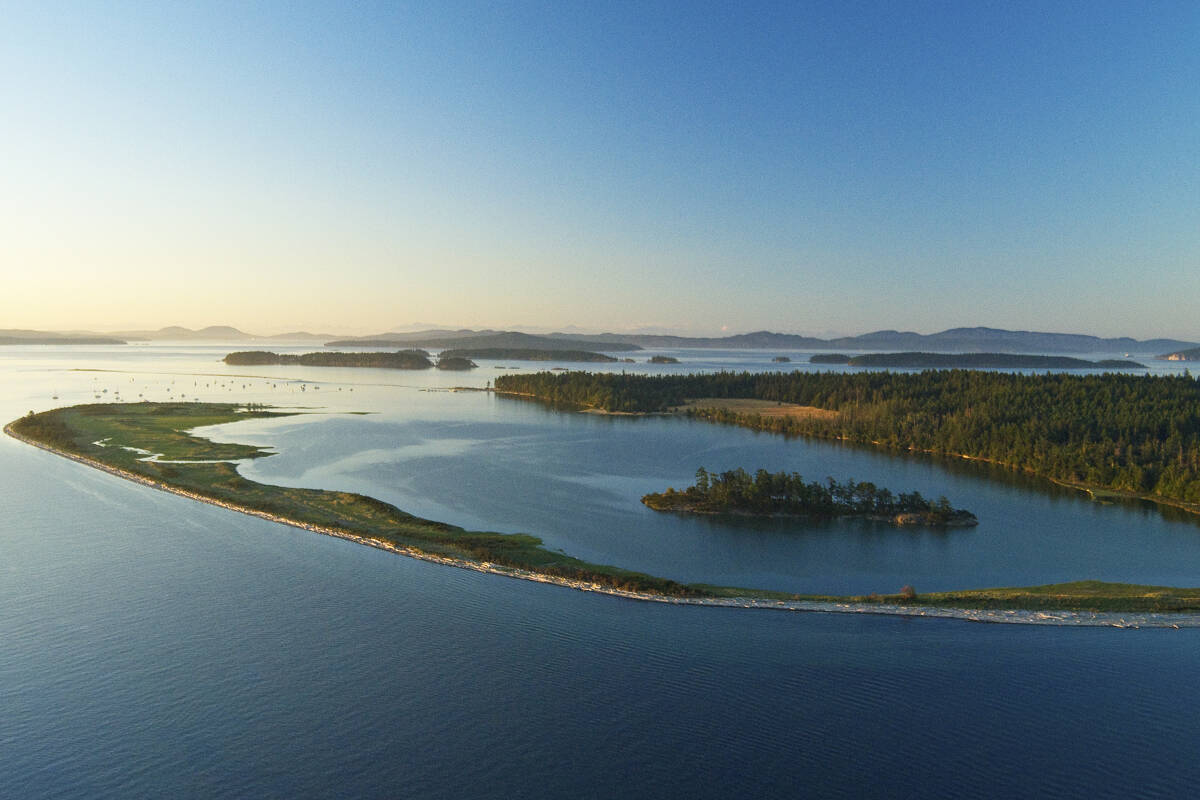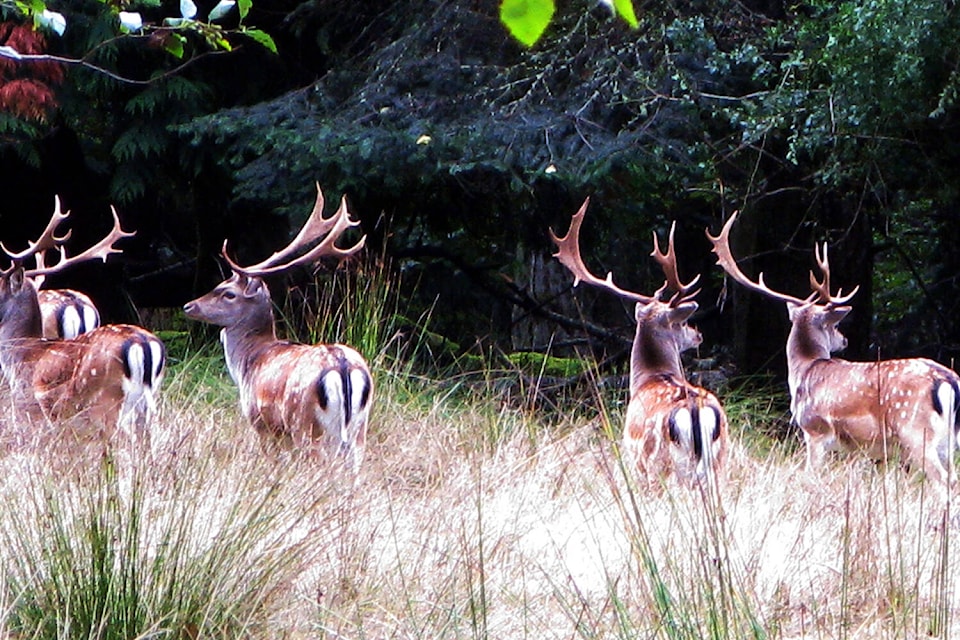First Nations, conservation groups and Parks Canada are set to begin the eradication of invasive fallow deer on Sidney Island later this year following a narrow vote by a landowners strata on March 2.
The project – part of a larger project aimed at restoring and protecting the island’s rare coastal Douglas fir ecosystem – has been the subject of great controversy for the landowners on the island.
That level of contention showed in the vote, which saw the project approved with 50 votes in favour, 46 votes against and three abstentions.
“It wasn’t a surprise to me or I don’t think to anyone on council that the outcome was close. If it hadn’t been a highly debated and balanced community perspective on this, it wouldn’t have gone through everything it went through to get here,” said Mike Law, a homeowner on the island and strata board member.
“It now gives everybody involved the ability to move forward and protect and restore the ecosystem that is so in need of restoration on the island.”
The vote follows a different vote held in 2022 on whether the strata would allow access for the project, which initially failed despite around 55 per cent of votes cast being in favour over debate as to whether a simple majority was enough to constitute approval. The province’s Civil Resolution Tribunal was tasked with weighing in on the issue after two groups of residents filed competing claims.
READ MORE: Parks Canada wants to eradicate invasive deer on Sidney Island
The tribunal ruled a simple majority was enough to constitute approval, and ordered the strata to hold two new votes – one to decide whether to approve the invasive deer eradication, and another on whether to approve the project’s work focused on eliminating invasive vegetation and replace it with native species, which will take place later this year.
News the vote had succeeded was a relief for the WSANEC Leadership Council, one of Parks Canada’s main partners on the project from the beginning and the first group whose permission and support was necessary to bring the project to fruition, said community engagement coordinator Eric Pelkey.
“We’ve been going through this for a number of years now, with the first vote halting everything, so it’s a relief to finally get the approval for us to begin the real work now,” said Pelkey. “This is the main element of the restoration of the island from the destruction we have seen caused by the fallow deer after they were introduced onto the island.”
Pelkey said the invasive deer – introduced onto the island in the early 1900s by European settlers and thought to now number between 500 and 1,000 – have eaten and killed much of the native vegetation on the island, denying Indigenous peoples the food and medicine they have harvested for generations.
They have also starved the native black tail deer on the island, greatly reducing their population and further limiting Indigenous peoples’ ability to hunt for food.
With the approval for the eradication now secured, Pelkey said stakeholders in the project will work to refine the specifics of how it will be implemented.
What is known at this point is the majority of the cull will take place this winter and will involve contractor White Buffalo Inc. sending sharpshooters up in helicopters and on the ground to shoot as many of the invasive deer as possible.
Pelkey said members of the WSANEC First Nations – Tsartlip, Tseycum, and Tsawout – will not take part in the shooting of the fallow deer, but will harvest their remains to ensure no part of the animal is wasted and that they are put down in accordance with their traditions.
READ MORE: Sidney Island residents to vote on plan to eradicate invasive deer




